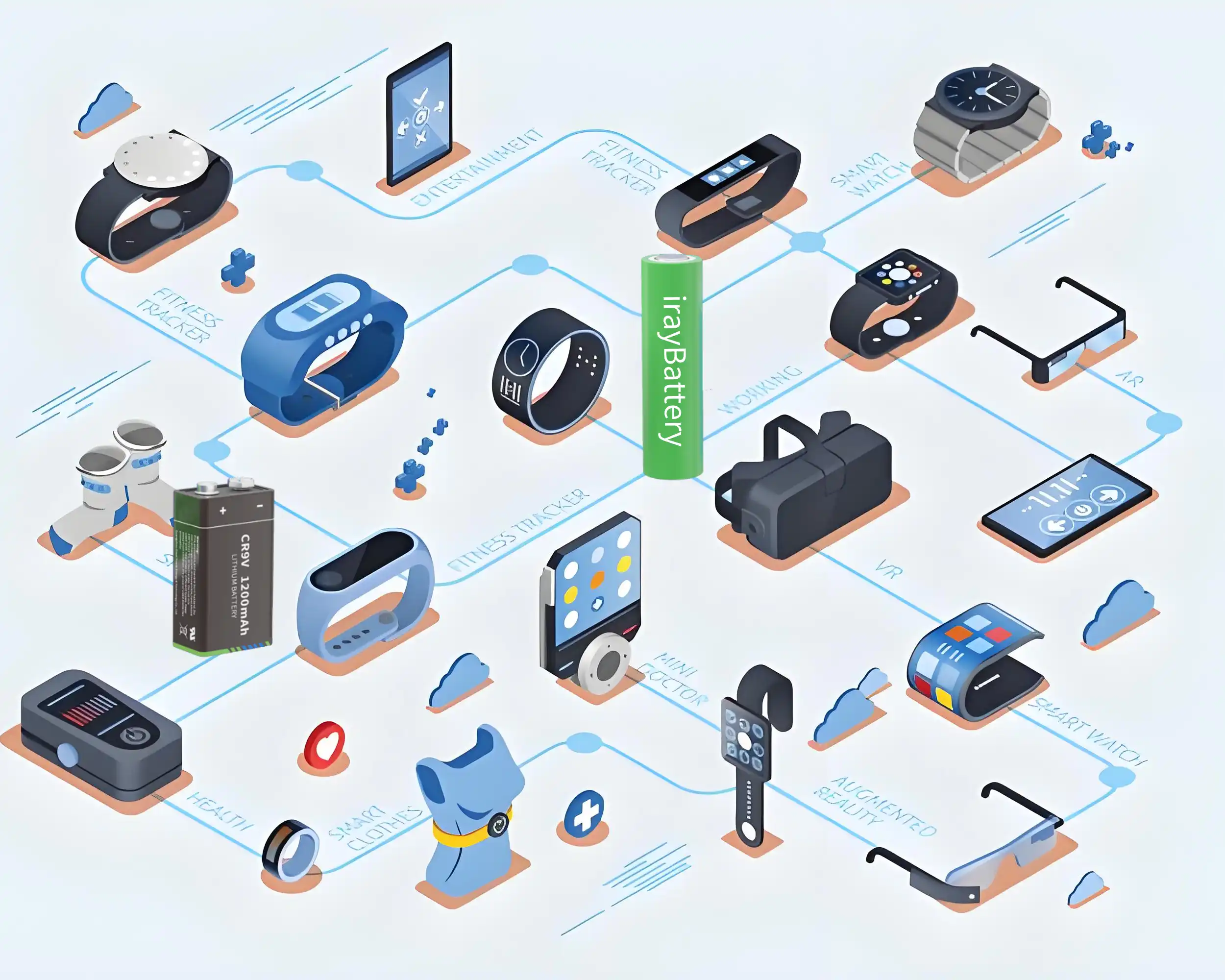Eye Massager Battery Application

Eye Massager Battery Guide | How to Choose Battery for Eye Massager?
To fully unlock the potential of an eye massager, the battery serves as the “heart” of the device. Without a high-performance and stable battery, even the most advanced massage technologies are nothing but empty promises. A weak battery doesn’t just ruin the user experience—it can also pose safety risks, such as excessive charging time, swelling, overheating, and even reducing the overall lifespan of the device. This is especially true for those sleek, high-tech-looking eye massagers that, if equipped with cheap and unstable batteries, are essentially all style and no substance.
Therefore, understanding the battery behind an eye massager is not only the manufacturer’s responsibility but also the key for consumers to choose a truly reliable product. In the following guide, the team at IRAY Energy will walk you through everything you need to know about eye massager batteries.
1、What Is an Eye Massager Battery?
2、How Does an Eye Massager Work?
The core working principle of an eye massager can be divided into three main functions: heat therapy, air pressure, and vibration. These three modes are combined or layered to simulate manual massage, helping to relieve eye fatigue, improve blood circulation, and provide a soothing, relaxing experience.
Heat therapy is one of the most common features. It uses electric heating films or carbon fiber heating elements to generate a constant temperature—typically between 38°C and 42°C—causing the microvessels around the eyes to dilate and promoting better blood flow. This function mainly relies on the battery’s endurance, as it requires stable and continuous power over time.
Air pressure massage has become increasingly popular in recent years. It uses built-in micro air pumps and inflatable airbags to mimic a “press-and-release” rhythm, offering physical relaxation to the muscles around the eyes. Since air pumps require a short burst of power to operate effectively, this function demands that the battery support moderate-rate discharge capability.
The vibration function stimulates acupressure points around the eyes through high-frequency vibrating components. Some advanced models even allow users to adjust the vibration intensity or frequency. As the motor generates fluctuations in current during operation, this feature requires the battery to have strong instantaneous stability and anti-interference performance.
In addition to these three core functions, many eye massagers also come equipped with intelligent features such as voice prompts, music playback, Bluetooth connectivity, and app control. These add-on features significantly increase power consumption, placing greater demands on the battery’s energy density—that is, the ability to pack higher capacity into a limited space.
3、What Are the Basic Requirements for Eye Massager Batteries?
1)Stable battery life with high energy density.
2)Stable discharge voltage.
3)High safety standards.
4)Lightweight and slim design.
5)Reliable cycle life.
Many eye massagers on the market claim a lifespan of 3–5 years. If the battery’s cycle life is only 300 charge-discharge cycles, performance degradation may occur within just a few months, harming the brand’s reputation. Ideally, the battery should support at least 500 full charge and discharge cycles.
4、Common Types of Eye Massager Batteries and Comparison
The first type is the 18650 cylindrical lithium-ion battery. These batteries are a staple in many consumer electronics and are known for their high energy density, cost-effectiveness, and technical maturity. They are often found in mid-range eye massagers. However, their larger size and heavier weight make them less suitable for ultra-slim, face-fitting designs. Many manufacturers use this type of battery to cut costs, but the trade-off is often a bulkier appearance and reduced wearing comfort.
5、Why Do High-End Eye Massagers Choose Lithium-Ion Batteries?
6、What Are the Precautions for Using Eye Massager Batteries?
Whether an eye massager lasts long and delivers a good user experience doesn’t just depend on the product design or battery quality—it also heavily depends on how the user handles the battery. In fact, many after-sales issues aren’t caused by the battery being “defective” but rather by being “misused.” That’s why it’s crucial to learn how to properly use an eye massager’s battery. Below are some key precautions we, as a battery supplier, recommend for both consumers and manufacturers:
1)Avoid over-discharging.
2)Avoid using the device while charging.
3)Be mindful of the charging environment.
4)Use the original charger.
5)Check device condition regularly.
6)Store at 50% charge if not in use for a long time.
FAQs About Eye Massager
Is an eye massager really effective?
How long should I use an eye massager each day?
Can I use an eye massager while wearing contact lenses?
Can an eye massager help reduce dark circles?
Will using an eye massager affect my eyesight?
Can I wear an eye massager while sleeping?
How do I choose the right eye massager for me?
Look for the following features:
① multiple modes like heat, air pressure, and vibration;
② comfortable fit and lightweight design;
③ reputable brand with reliable after-sales support;
④ intuitive controls and timer function;
⑤ foldable and travel-friendly design.
Is a larger battery capacity always better?
How long does an eye massager battery typically last?
My eye massager takes longer to charge now—does that mean the battery is aging?
📌 Tip:
For professional Eye Massager Battery customization or replacement solutions, feel free to contact the IrayEnergy engineering team. We’re here to provide efficient, reliable, and high-performance power solutions!

